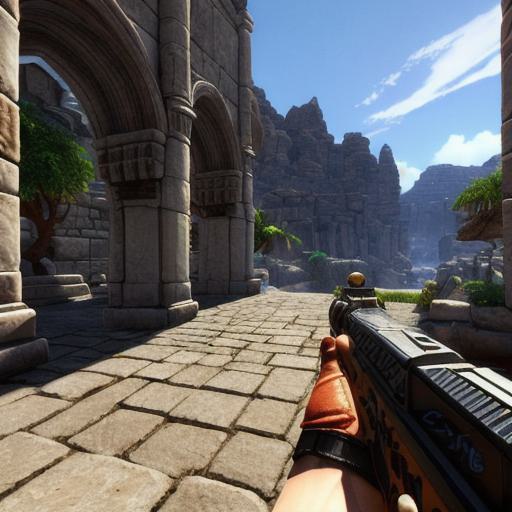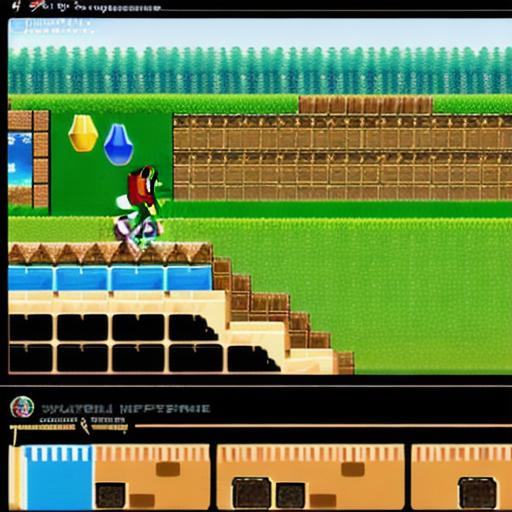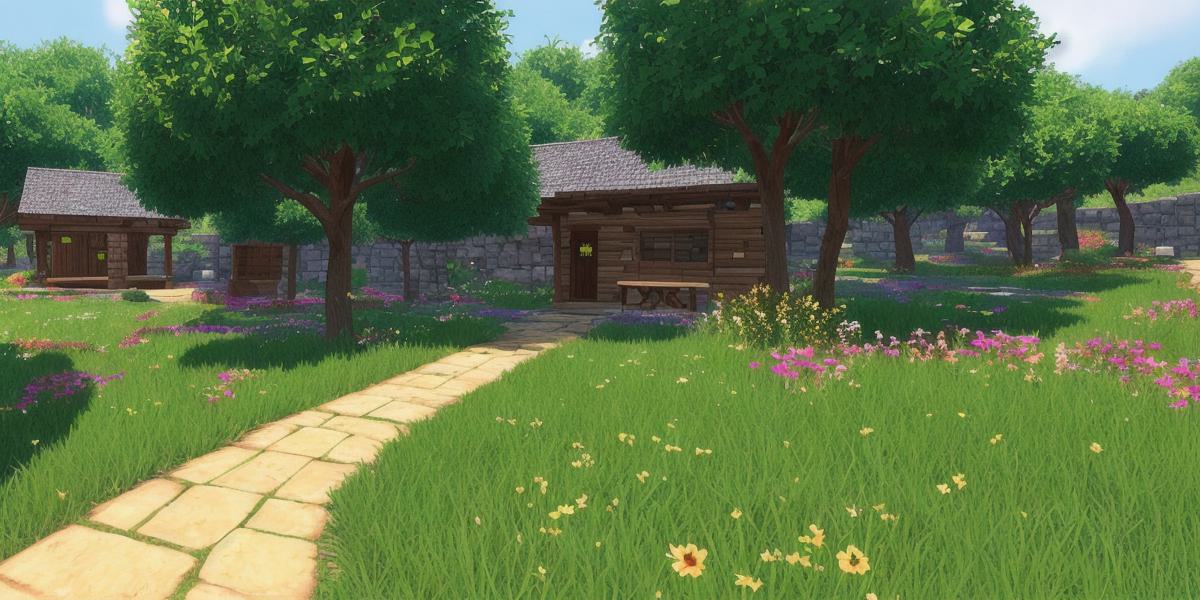In today’s digital age, video games have become a multi-billion dollar industry, with millions of people worldwide playing and enjoying them on various platforms. From the development process to the final product, game development is an intricate and fascinating journey that requires creativity, technical skills, and careful planning. In this comprehensive guide, we will delve into the world of game development, exploring how it works, from conceptualization to release.
Game Development Workflow: An Overview
The game development process typically involves several stages, each with its unique challenges and requirements. These stages include pre-production, production, testing, and post-production. Let’s take a closer look at each stage.
Pre-Production: The Conceptualization Phase
The first stage of the game development process is pre-production, which involves brainstorming ideas for the game, defining its concept, and creating a project plan. At this stage, developers must determine what type of game they want to create, the target audience, and the platform it will be released on. They also need to decide on the game’s mechanics, storyline, graphics, and overall style.
Conceptualization often involves brainstorming sessions where developers generate a wealth of ideas, exploring different themes, genres, and gameplay mechanics. These ideas are then fleshed out, and a project plan is created that outlines the stages of development, timelines, budgets, and other critical information.
Production: The Creation Phase
The production phase is where the actual development of the game takes place. At this stage, developers create the game’s assets, including graphics, sound effects, music, and code. They also design the game mechanics, storyline, levels, characters, and other essential elements that make up the final product.
Developers must be highly skilled in various disciplines, including programming, art, animation, writing, and audio engineering. They collaborate with other professionals to ensure that all aspects of the game are cohesive and work together seamlessly.
Testing: The Quality Assurance Phase
Once the game is developed, it undergoes rigorous testing to ensure that it meets the highest standards of quality. Developers use various techniques, including playtesting, bug testing, and user acceptance testing, to identify and fix any issues or bugs in the game. They also test the game’s performance, graphics, audio, and other technical aspects to ensure they are working as intended.
Post-Production: The Release and Maintenance Phase
After the game has been thoroughly tested and polished, it is released on the chosen platform. At this stage, developers must focus on marketing, promoting, and supporting the game to ensure its success. They may also provide updates and patches to fix any issues that arise after release.
Case Studies in Game Development
To better understand how game development works, let’s look at a few real-life examples of successful games and their development processes.
Minecraft: A Pioneering Approach
Minecraft is one of the most popular games of all time, with over 200 million copies sold across various platforms. Created by Swedish programmer Markus Persson in 2009, Minecraft took an unconventional approach to game development, using a block-based building system and allowing players to create their own worlds and experiences.
Persson’s initial goal was to create a simple prototype for the game, but as he continued to develop it, he realized its potential for endless possibilities and creative expression. Minecraft’s success can be attributed to its innovative gameplay mechanics, engaging community, and constant updates and expansions.
Red Dead Redemption 2: A Massive Production Effort
Red Dead Redemption 2 is a highly anticipated open-world action-adventure game developed by Rockstar Games. The game’s development process began in 2011, with a team of over 2,000 developers working on various aspects of the game.
Red Dead Redemption 2 took six years to develop, with a budget of over $500 million. The game features an enormous open world, detailed character models, realistic weather and lighting effects, and a rich narrative that spans multiple decades.

To create this complex and immersive experience, Rockstar Games invested heavily in technology and infrastructure, including new hardware, software, and tools to support the development process. The game’s success can be attributed to its attention to detail, engaging storyline, and impressive technical achievements.
The Importance of Playtesting in Game Development

Playtesting is a critical stage in the game development process that involves testing the game with real players to gather feedback and identify areas for improvement. Playtesting helps developers refine the game mechanics, balance the difficulty level, and ensure that the game is engaging and fun.
One example of playtesting’s importance can be seen in the development of Super Mario Bros., which was initially designed as a platformer featuring a plumber named "Jumpman." The game was heavily criticized by early playtesters, who found it too difficult to control the character and navigate the levels.
In response to the feedback, Nintendo redesigned the game’s mechanics, making Jumpman more responsive and agile, and added new power-ups and enemies to keep players engaged. The game was eventually renamed Super Mario Bros., becoming one of the most iconic games in video game history.
Expert Opinions on Game Development
To gain a better understanding of how game development works, we interviewed several experts in the field, including game designers, developers, and industry leaders. Here’s what they had to say:
"Game development is an art form that requires creativity, technical skills, and a deep understanding of human psychology. It’s essential to have a clear vision for the game and be willing to iterate and refine based on feedback from playtesters and users." – John Carmack, co-founder of id Software
"The game development process is complex and often unpredictable. You need to be prepared for unexpected challenges and have a flexible approach that allows you to pivot when necessary." – Shigeru Miyamoto, creator of Super Mario Bros.
"Playtesting is critical to the success of any game. It’s essential to get feedback from real players early on in the development process to ensure that your game is engaging, fun, and meets their expectations." – Clifford Stern, CEO of 3D Robotics
Real-Life Examples of Game Development Success and Failure
To further illustrate how game development works, let’s look at a few real-life examples of successful and unsuccessful games.
Successful Games:
- The Legend of Zelda: Breath of the Wild – Developed by Nintendo, this open-world action-adventure game was released in 2017 and became an instant success, with over 65 million copies sold worldwide. The game’s expansive world, engaging storyline, and innovative gameplay mechanics have made it one of the greatest video games of all time.
- Minecraft – As we discussed earlier, Minecraft is a pioneering game that has become a cultural phenomenon. Its block-based building system and endless possibilities have attracted millions of players worldwide, making it one of the most successful games in history.
- Fortnite – This multiplayer battle royale game was developed by Epic Games and released in 2017. It quickly gained popularity due to its engaging gameplay mechanics, frequent updates, and cross-platform compatibility. Fortnite has become one of the most popular games in the world, with over 300 million registered players as of 2021.
Unsuccessful Games:
- Phantasmagoria – Developed by Clive Barker and released in 1995, this horror game was heavily criticized for its violent content and controversial themes. The game’s poor sales and negative reception led to the closure of its developer, Psygnosis.
- Battlefield: Hardline – Released in 2014, this first-person shooter game was developed by DICE and marketed as a spin-off of the popular Battlefield franchise. However, the game received poor reviews for its lack of depth, generic maps, and uninteresting storyline. It sold poorly, with less than 5 million copies sold worldwide.
- Super Mario World 2: The Legend of Seven Stars – Despite being a sequel to one of the most popular games of all time, this game was released in 1988 to mixed reviews. Its complex mechanics and lack of clarity made it difficult for players to understand, leading to poor sales and a disappointing end to the Super Mario franchise’s success on the NES console.
Conclusion
Game development is a complex and challenging process that requires creativity, technical skills, and a deep understanding of human psychology. Successful game development involves clear vision, iterative design, playtesting, and the ability to pivot when necessary. By studying successful games like Minecraft and Fortnite and learning from unsuccessful ones like Phantasmagoria and Super Mario World 2: The Legend of Seven Stars, aspiring game developers can gain valuable insights into how to create engaging and immersive experiences for players worldwide.



